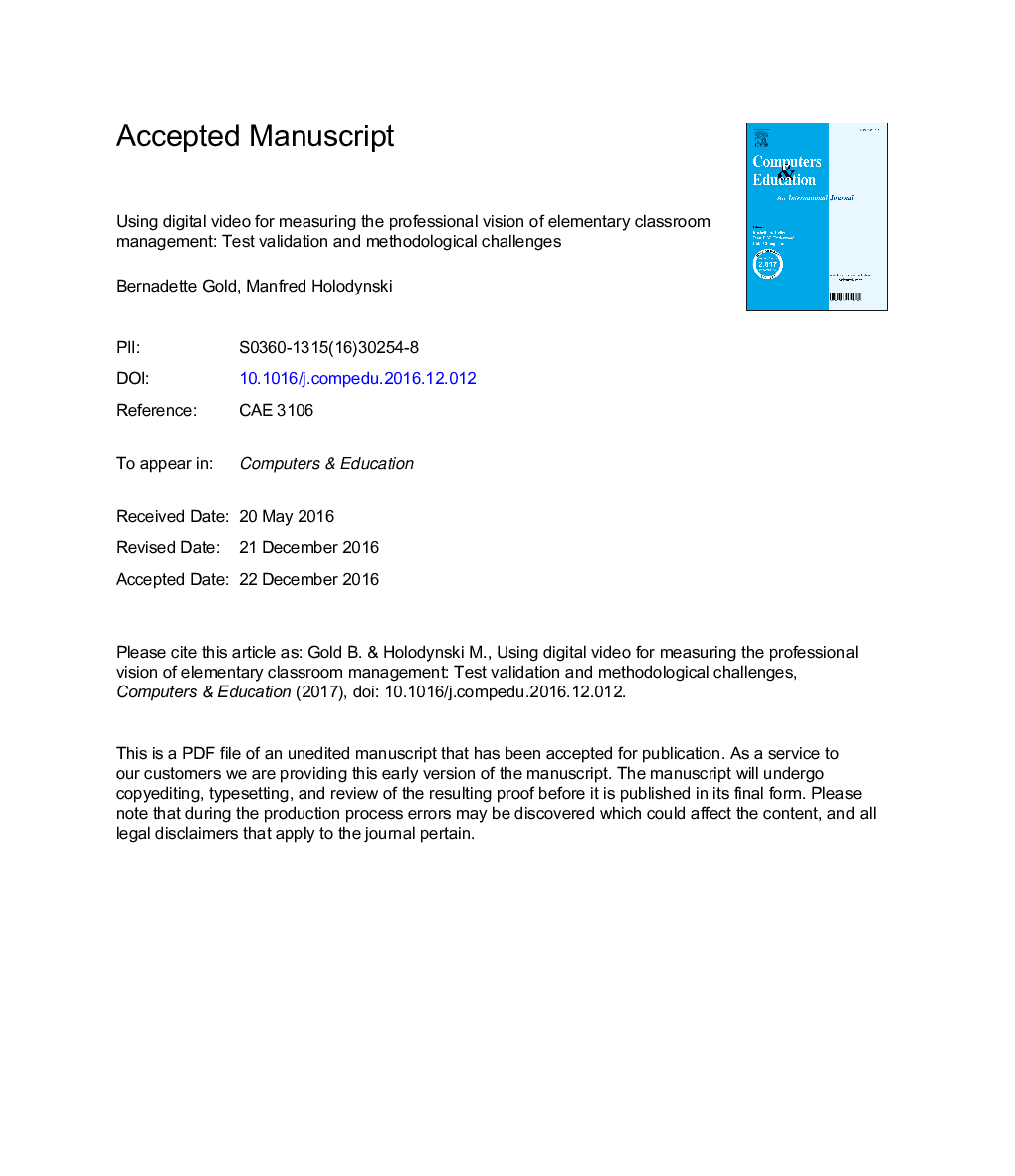| Article ID | Journal | Published Year | Pages | File Type |
|---|---|---|---|---|
| 4936877 | Computers & Education | 2017 | 57 Pages |
Abstract
Using videos to improve teaching is becoming increasingly popular. Classroom videos help teachers to gain professional vision; that is, the ability to connect theory with practice and possess the necessary situated knowledge to recognize and interpret events that are crucial for learning. However, assessing the effects of such video-based learning environments on such situated knowledge requires valid instruments that are able to represent the complexity of teaching. The main aim of this study was to develop a standardized, video-based test for assessing the professional vision of one of the main dimensions of teaching quality: classroom management. We investigated the internal structure of our test, its sensitivity to differences in expertise, and its discriminant validity. A further problem with such video-cued testing is the item dependence that arises from items being nested within video clips. Therefore, a second aim of this study was to determine whether a bifactor modeling approach could counter the item dependence of video-based measurements and produce more accurate reliability and validity estimates for video-based tests.
Related Topics
Social Sciences and Humanities
Social Sciences
Education
Authors
Bernadette Gold, Manfred Holodynski,
